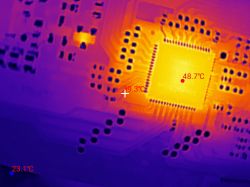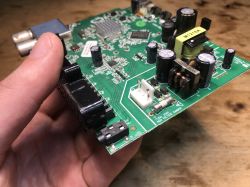FAQ
TL;DR: For ≈$20, the SDS011 laser sensor measures PM2.5/PM10, draws 65 mA active, and lasts 8 000 h; “calibration shows trends” [Elektroda, TechEkspert, #17538816; Elektroda, blue_17, #17539125]. Why it matters: DIYers get near-real-time smog data but must manage lifetime and accuracy.
Quick Facts
• Particle range: 0.3 – 10 µm, output 0–999 µg/m³ [Nova Fitness, SDS011 datasheet]
• Active/Sleep current: 65 mA / 2 mA @ 5 V [Elektroda, TechEkspert, post #17538816]
• Rated laser life: 8 000 h (≈3 years at 8 h/day) [Elektroda, TechEkspert, post #17538816]
• Recommended humidity window: 20 – 60 % RH for laser accuracy [Elektroda, blue_17, post #17539125]
• Typical street-price: US $18–25 including USB-UART dongle [AliExpress search; Elektroda, TechEkspert, #17538816]
What does the SDS011 actually measure?
The module uses a 650 nm laser and photodiode to count light‐scattering particles, then converts counts to mass concentration of PM2.5 and PM10 (µg/m³) [Nova Fitness, SDS011 datasheet]. It ignores gases such as CO or NO₂, so car-exhaust readings stay flat [Elektroda, cas-it-solutions, post #17539522]
How do I connect the sensor to an Arduino?
Power the SDS011 from 5 V. Connect TX→D2 and RX→D3 through a 5 V-to-3.3 V divider or use 5 V-tolerant pins. Use 9600 bps UART. The demo code in the thread parses the 10-byte frame and prints PM values [Elektroda, TechEkspert, post #17538816]
Can I extend the 8 000 h laser life?
Yes. Cycle power: run 30 s every 15 min, reducing duty cycle to 3 % and theoretical life to >11 years [Elektroda, TechEkspert, post #17538816] Use the sleep command (0x06) via UART to stop the fan and laser between samples.
Does humidity or fog skew readings?
Yes. Water droplets scatter light like dust; users reported several-hundred-percent PM spikes during fog [Elektroda, lopiola, post #17821383] Heating air can evaporate droplets but increases power use and may trap dust on wet surfaces, giving low values [Elektroda, CosteC, post #17540764]
How accurate is the SDS011 without calibration?
Field tests near certified stations showed ±10 µg/m³ deviation at moderate levels [Elektroda, TechEkspert, post #17538816] Studies found uncalibrated low-cost lasers can overestimate by ~30 % above 150 µg/m³ [blue_17 summary, #17539125]. Calibration against a reference or gravimetric sampler improves correlation by up to 97 % [Elektroda, czareqpl, post #17542787]
What quick calibration method can hobbyists use?
- Place the SDS011 beside a local government station for 24 h.
- Log both datasets; compute linear regression (y=mx+b).
- Apply slope and offset in firmware. This trims systematic error below ±10 % in city tests [AGH report cited by blue_17, #17543702].
Is battery power realistic?
Continuous sampling draws ≈325 mWh per hour. A 2 000 mAh Li-ion lasts ~15 h. With 3 % duty cycling, runtime jumps to >20 days. Sleep current is only 2 mA [Elektroda, TechEkspert, post #17538816] High-current heaters for dehumidifying negate battery operation [Elektroda, CosteC, post #17540764]
What alternatives exist to the SDS011?
• Plantower PMS5003: bigger chamber, similar price, overestimates at high PM [Elektroda, blue_17, post #17539125]
• Sensirion SPS30: smaller, I²C output, floating-point data, rated 8-year 24/7 life but costs ≈€50 and has 12-week lead time [Elektroda, czareqpl, #17542752; blue_17, #17725418].
Can I 3-D-print my own optical dust sensor?
Possible but tricky. You must align LED/laser and photodiode within <0.1 mm and control airflow. Calibration requires reference equipment; TI’s TIDA-00378 shows the complexity. "It’s all in the details" [Elektroda, blue_17, post #17539426] DIY units often cost more than ready modules and lack repeatability.
What is an edge case that breaks readings?
If the air inlet is blocked, fan speed drops and PM values fall to near zero even in polluted air [Elektroda, TechEkspert, post #17538816]
How do I implement cyclic sampling in firmware?
Use this 3-step routine:
- Send sleep-exit command (0x01) and wait 30 s for airflow.
- Read five frames; average PM2.5/PM10.
- Send sleep command (0x06); delay 14 min 30 s. This keeps hourly energy below 20 mWh while staying within laser lifetime spec [Elektroda, TechEkspert, post #17538816]





